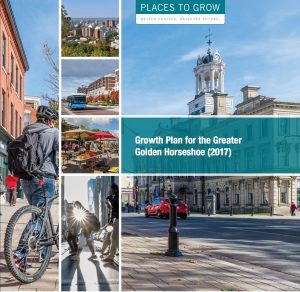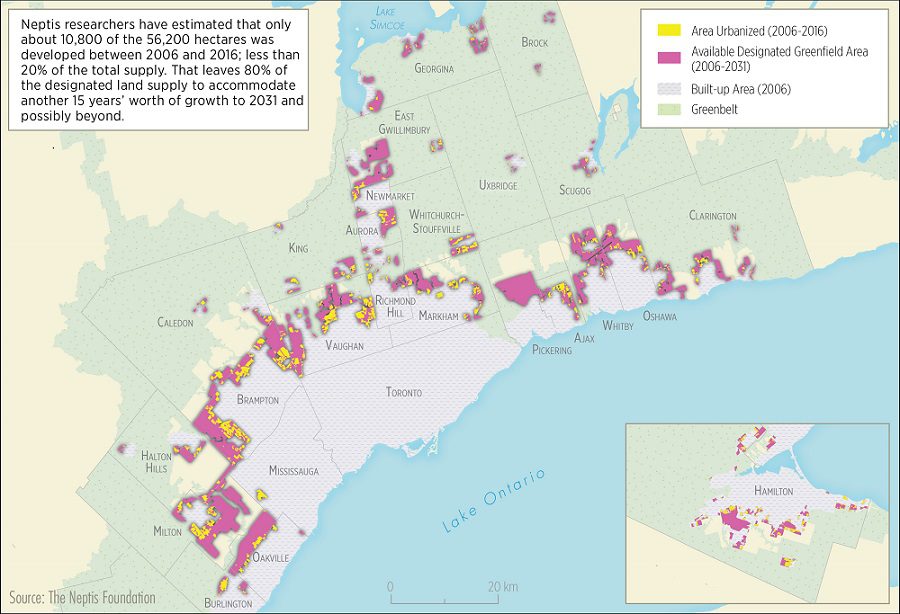We need to manage growth to ensure a prosperous, healthier future.
Smart Growth is the way forward and the logic behind the provincial Growth Plan.
The Growth Plan is a provincial land use plan that directs where development should occur in the Greater Golden Horseshoe (GGH). It is the flipside of the Greenbelt Plan which identifies where urbanization should not occur.

Watch former Toronto Mayor, David Crombie, talk about the importance of the Growth Plan.
For decades the Greater Golden Horseshoe has suffered under a sprawl pattern of growth:
- Farmland was being paved over at an alarming rate prior to the establishment of the 2006 Growth Plan.
- Forests, species and natural areas are increasingly threatened by urbanization.
- The Greater Toronto Area is one of the most congested metropolitan areas in North America and a destination of choice for many people and businesses relocating from other parts of Canada and around the world.
- By 2041, population growth in the Greater Golden Horseshoe Area is projected to surpass 13.5 million residents.
Sprawl rewards land speculators and landowners. But it fails to provide affordable homes for families. Instead, it delivers large expensive houses on large lots, and housing few of us can afford. Sprawl requires more people to drive than in an urban area, and car ownership and massive mortgages are the main reasons why personal debt levels have climbed. Studies have shown low-density development doesn’t pay its way, so the incurring municipal debt is passed onto taxpayers. A home preference survey by RBC and Pembina illustrated that people would rather have a shorter commute and a smaller house over a larger lot and a long commute.
We know there is a smarter way to grow. The provincial Growth Plan provides a planning framework that moves us away from sprawl to healthier, complete communities.
There is more than enough land for housing.
Municipalities plan for growth 20 to 25 years ahead. In the Greater Golden Horseshoe, enough land has been set aside inside existing urban boundaries for housing construction up to 2031. Currently, regional governments are developing land use plans to 2041.
The Neptis Foundation, an independent research organization has determined that there is more than enough land to accommodate population growth. If we grow smarter we can house more people, use up less valuable farmland and require less expensive infrastructure. Neptis also illustrates that not only is there enough land, but that our housing needs are changing as households get smaller.
Read the full report on housing in the Greater Toronto Area here. Photo credit: The Neptis Foundation.
Watch former Executive Director of the Neptis Foundation, Marcy Burchfield, explain why there is more than enough land for housing.
Note: Every community is different. It is important to look at the community level to understand housing needs.
Click on the sections below for more information:


